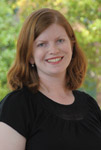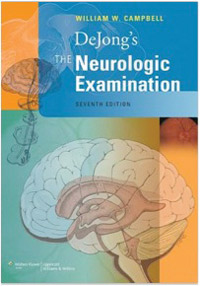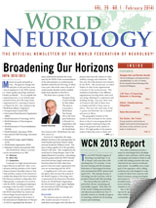By Sarah Matteson Kranick, MD

Sarah Matteson Kranick
A recent study asked medical students and internal medicine residents to rate eight medical subspecialties with regards to the students’ feelings of competency and perceived difficulty. The 150+ respondents identified neurology as the specialty in which they had least knowledge (p<0.001) and was most difficult (p<0.001). [Winchuk AV BMC Medical Education 2010]
Similar studies in Europe and elsewhere have led to much consternation in the medical education literature over an emerging epidemic of “neurophobia.” The demand for neurologists is predicted by the Workforce Task Force of the AAN to overtake supply by 2020, making “neurophobia” not just a problem for academic neurologists, but for all of primary medical education. Primary care doctors will be increasingly called upon to triage, diagnose and treat neurological disorders at a time when subspecialization is increasingly common among neurologists. How do we prevent “neurophobia” and increase the number of neurophiles among all of our medical students and medicine resident rotators?
 The new edition of “DeJong’s The Neurological Examination,” by William W. Campbell, will appeal to neurophiles. It has been modernized in many ways — the four-color edition is much easier on the eye, for one thing. There are more images accompanying the text, with clearer photographs and MRIs to supplement the clinical vignettes.
The new edition of “DeJong’s The Neurological Examination,” by William W. Campbell, will appeal to neurophiles. It has been modernized in many ways — the four-color edition is much easier on the eye, for one thing. There are more images accompanying the text, with clearer photographs and MRIs to supplement the clinical vignettes.
The text has been reorganized somewhat, but still follows the general neurological encounter as most of us practice it. This book is longer than the prior edition by almost 200 pages, but the expanded material is primarily clinical in nature, and the neuroscience underlying these observations remain mostly the same. Most of us in practice will appreciate the balance of anatomy and pathophysiology here, as we are typically consulting such texts when we have just seen a patient with bilateral cortical ptosis, for example, and we are trying to remember whether supranuclear cortical control of the levator muscles has a left or right predominance. This is the sort of question Campbell answers for us time and time again, with a concise description of the anatomy involved. The “voice” of this textbook will remind you of a favorite professor from residency, and makes me envious of Campbell’s students at USUHS.
Throughout this edition, links have been inserted to various videos of the neurological exam and clinical examples of abnormal neurological signs. Having the Kindle edition would certainly make these (hyper)links easier to use, although some reviewers on Amazon have noted that the Kindle edition makes viewing tables less ideal. Unfortunately, after typing in four examples of links from the print edition, I found non-working videos each time. Future editions would benefit from a webpage devoted to accompanying videos, or a DVD included in the print version.
Frequently DeJong’s is described as a book for residents, fellows or practicing neurologists. I agree that the level of detail is likely too much for medical students, and that basic neuroscience must be mastered before attempting to understand clinical neurology. This textbook, however, can play an important role in medical education at all levels.
For many of us neurophiles, it was the detection of some abnormal neurological sign in a patient we saw as medical students that started our lifelong interest in neurology. In the short span of a four-week clinical rotation, we cannot expect every student to have enough patient encounters to prevent neurophobia. Showing them how we practice the neurological exam, and what resources we use to put abnormal findings into context, like this text, may break down some of the intimidation that surrounds our specialty.
Kranick is chief of Neurology Consult Service, National Institute of Neurological Disorders and Stroke, National Institutes of Health, Bethesda, Md.
DeJong’s The Neurological Examination
By William C. Campbell
830 pages
